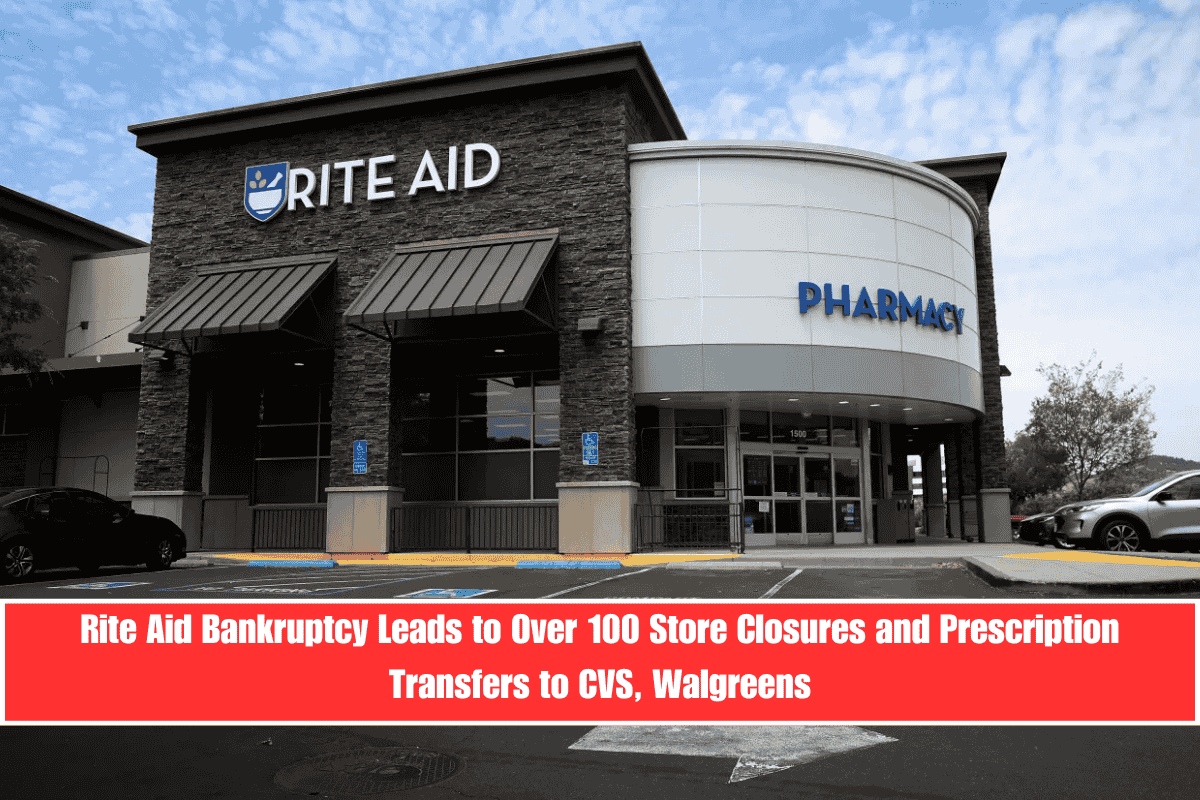Rite Aid, one of America’s largest pharmacy chains, has filed for bankruptcy for the second time in less than a year. This latest development has led to the closure of more than 100 stores and a massive prescription transfer to competitors like CVS and Walgreens. As customers scramble to adjust, the company is working to make the transition as smooth as possible. Here’s what you need to know if you or someone you know uses Rite Aid for prescriptions or health services.
Rite Aid’s Financial Struggles
Rite Aid first filed for bankruptcy in October 2023, revealing it owed about $8.6 million in debt. After months of attempting to recover, the company filed again in May 2025, signaling deeper financial troubles. At the time of the second filing, Rite Aid was operating 1,240 locations across 15 states.
The main reason behind the closures is part of a strategy to restructure and reduce operating costs while still providing essential pharmacy services during the transition.
More Than 100 Store Closures
As part of its bankruptcy plan, over 100 Rite Aid locations will shut down. These closures will impact thousands of customers who rely on the chain for their prescriptions, daily medications, and immunizations.
To ease the burden, Rite Aid confirmed that it is working to transfer prescription files to other major pharmacy retailers. However, the company had initially asked customers to hold off on switching pharmacies too quickly. The concern was that other pharmacies might be overwhelmed by the sudden increase in prescription requests, leading to delays.
Prescription Transfers Underway
Despite Rite Aid’s concerns, a New Jersey judge approved the transfer of prescription records to chains like CVS, Walgreens, Albertsons, Kroger, and Giant Eagle. The transition includes prescription files from around 1,000 Rite Aid stores.
CVS is taking the lead by acquiring files from 625 pharmacies and taking over 64 Rite Aid store locations. Walgreens will also receive a large portion of prescription files, although exact figures have not been disclosed.
Court documents state that up to 810 stores are part of this nationwide prescription transfer plan. Some of these will also include Bartell Drugs, a chain owned by Rite Aid, now expected to operate under CVS in certain areas.
What It Means for Customers
According to CVS, the transition should be “seamless,” meaning customers will be able to refill prescriptions and receive services like usual. Rite Aid has reassured the public that stores not yet closed will still offer pharmacy services like immunizations and prescription refills during the transition.
If you are a Rite Aid customer, your prescription will be automatically transferred to one of the designated pharmacies. You do not need to take any action unless you want to change your pharmacy manually.
CEO Speaks Out
Rite Aid CEO Matt Schroeder said the company’s main focus during this challenging period is customer care. “A key priority for Rite Aid is to ensure that as many of our loyal customers as possible continue to receive the pharmacy services and care they require without interruption,” he said.
He also noted that these transition agreements would help save jobs for many team members, ensuring a smoother shift for employees and customers alike.
Other Chains Also Closing Stores
It’s worth noting that Rite Aid isn’t the only chain closing stores this year. Walgreens is also reducing its store count, and CVS is closing at least 23 additional locations in the same state as part of their own restructuring plans.
Rite Aid’s second bankruptcy marks a tough chapter for the long-standing pharmacy chain. But with prescription transfers in place and customer care still a top priority, the company aims to ease the transition. While store closures may be frustrating, efforts from competitors like CVS and Walgreens could help prevent major disruptions in service for millions of Americans.


















Leave a Reply